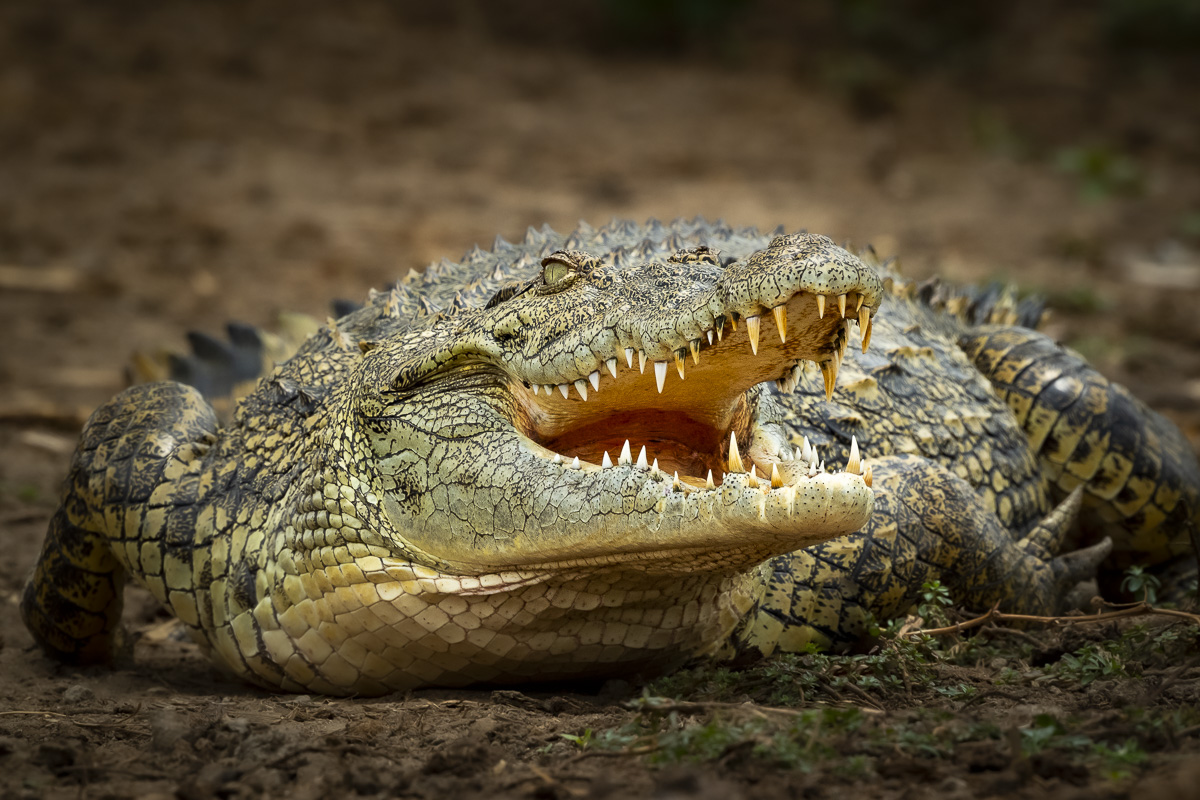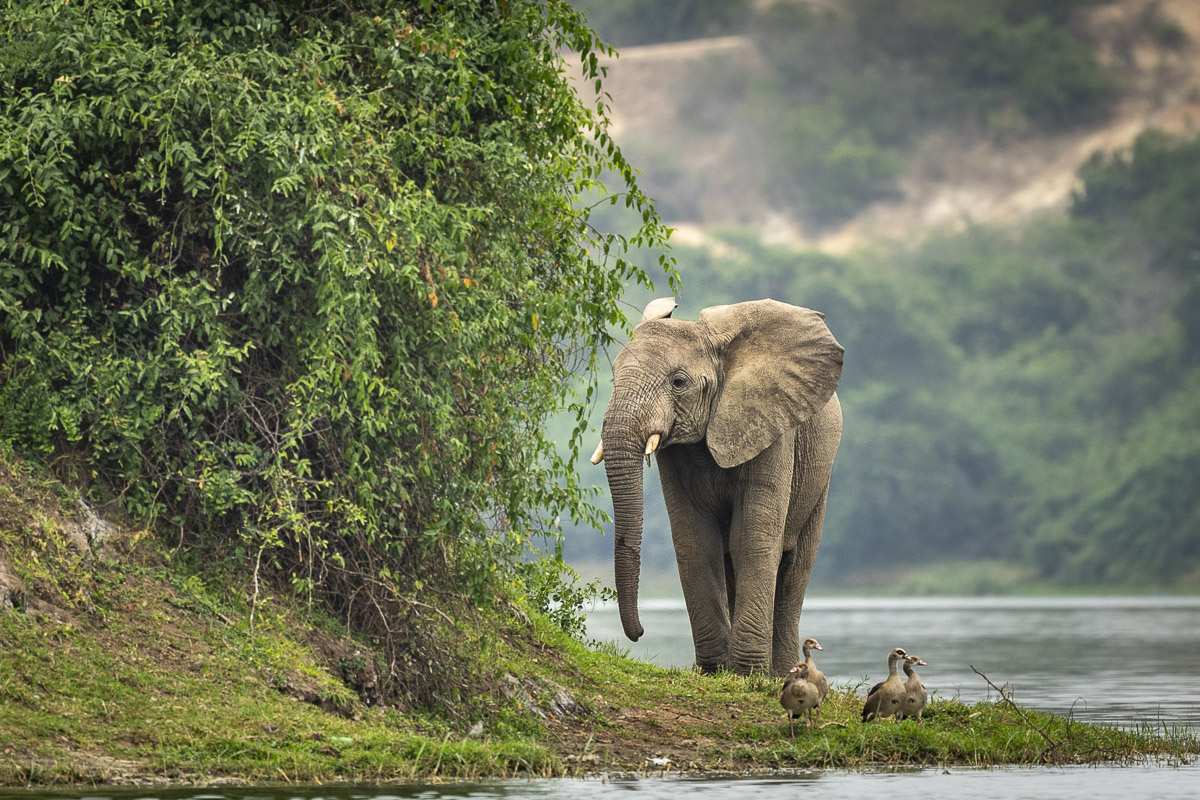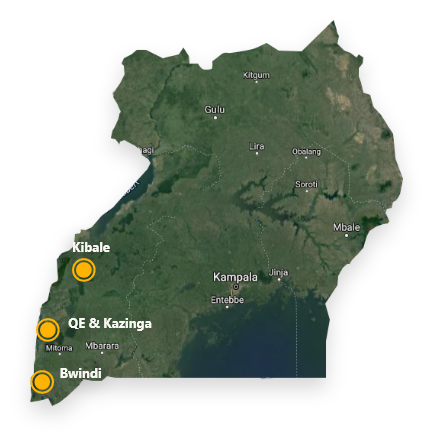
Uganda is an equatorial country in east Africa, also known as ‘the Pearl of Africa’ has one of the most diverse habitats; from the savannah of Kidepo Valley to the north, through snow-capped Ruwenzori Mountains and tropical forests of Kibale National Park, all the way to Bwindi Impenetrable Forests and Virunga Mountains in the south.
It’s a country that’s emerged as a leader in wildlife conservation, enjoying recent years of peace and development, after suffering a violent history. Its capital is Kampala, which is near the international airport of Entebbe, served by many major airlines and only a 5 hour flight from Dubai airport. Uganda is an equatorial country, thus the climate is tropical and divided into wet (March-May and September-November) and drier months (June-August and December-February). The mountainous areas of Bwindi often experience chilly temperatures during drier months. Opposite to northern Botswana in terms of desolation, the majority of Uganda is laden with small villages and towns, and their landscape of wilderness is intertwined with massive plantations of bananas, tea, coffee or cotton. Over time, human settlements encroached onto original gorilla and chimpanzee habitats and only thanks to strong local and international conservation efforts, the great apes are on the rebound under protection of national parks and understanding of local communities.
For wildlife enthusiasts, Uganda is probably most known for its chimpanzee and mountain gorilla trekking. However, one cannot forget about ‘tree lions’ of the Queen Elizabeth National Park or landscapes of the famous Murchison Falls. It is also a birders paradise with over 1000 species of birds in various habitats, providing an excellent destination for birdwatchers.
Our focus while visiting Uganda will be the 24 species of primates that can be found in and around tropical forests, especially the Great Apes, trekking to spend time with chimpanzees and mountain gorillas. This particular safari, because of its specific character, is suitable for anyone who wants to just observe and enjoy the proximity to primates and snap some iPhone photos, through to advanced photographers. The groups (8 max) are guided by local rangers who manage safety and the proximity to the wildlife at all times, allowing the group to be safe and respectful when following the rules set by our hosts.
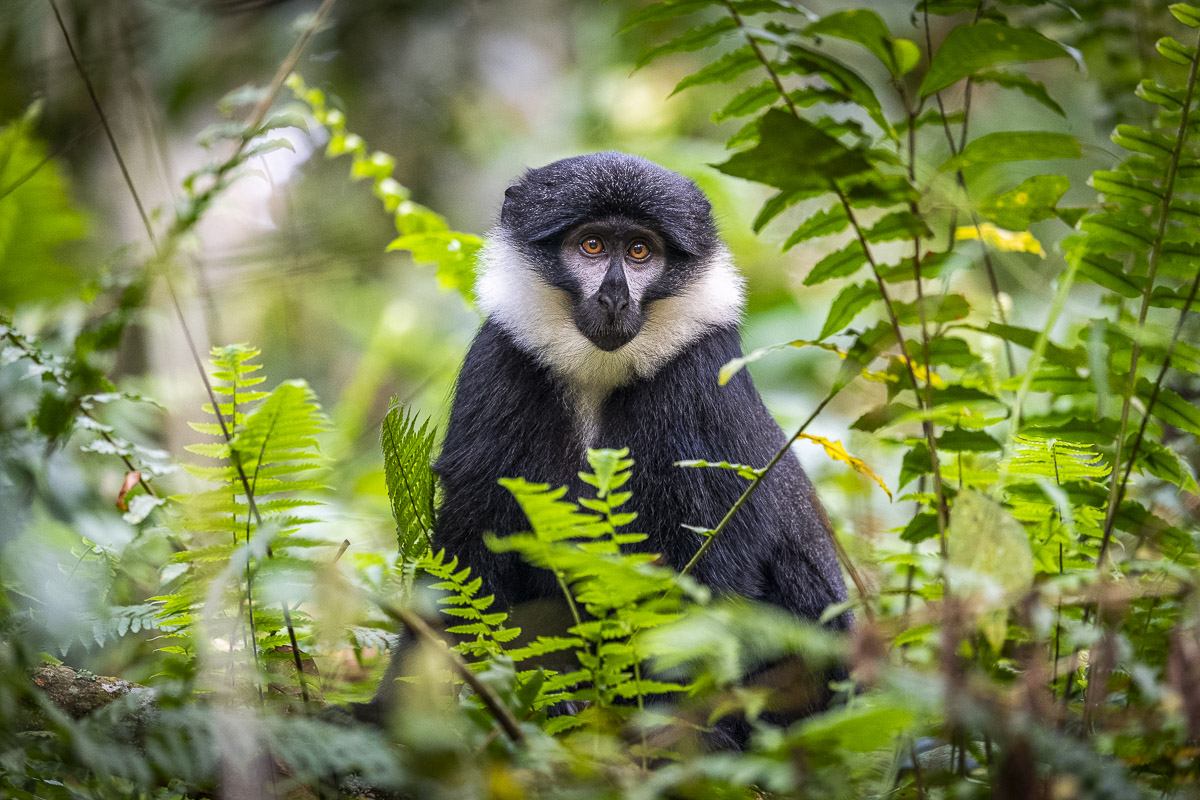
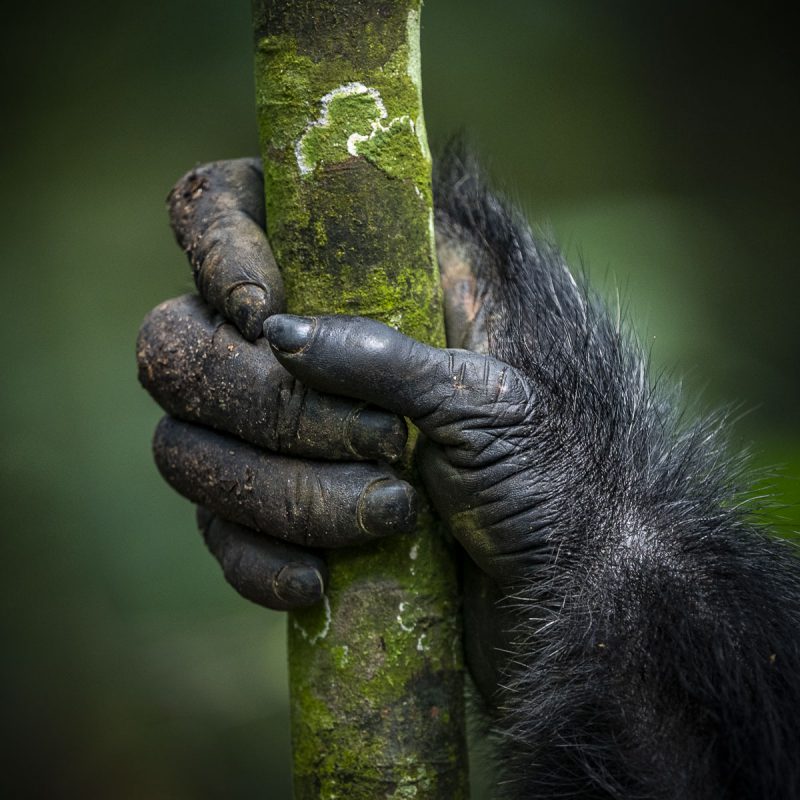
Kibale National Park
Kibale is located in the west of the country and characterized by verdant tropical forest with marsh areas in places. It has the highest density of primates in Africa, which apart from chimpanzees, will provide opportunities to see black-and-white and red colobus, red-tailed monkeys, grey-cheeked mangabeys, blue monkeys or olive baboons.
Chimpanzees share more than 94% of their DNA with humans and live in communities containing anywhere from 10 to over 100 members. They are omnivorous and while primarily feeding on fruits, nuts and other vegetarian dishes, their diet also includes insects and small mammals. Chimpanzees’ social behaviours are fascinating; we dedicate a minimum of two days while visiting Kibale to get to know our close cousins. We spend one full day during the so-called ‘habituation experience’ where in a small team, we observe a community when they wake up and follow them in their daily routine until they start preparing for the evening. The habitation experience follows chimps which aren’t fully habituated to humans; thus, we may trek kilometres following and watching them from a safe distance. In order to experience closer encounters with chimps, we will also spend some time with habituated groups, which do not see humans as a threat and may be passing through our team as close as an arm’s length away. In both cases, photographic and iPhone snapshot opportunities are endless and leave you mesmerized.
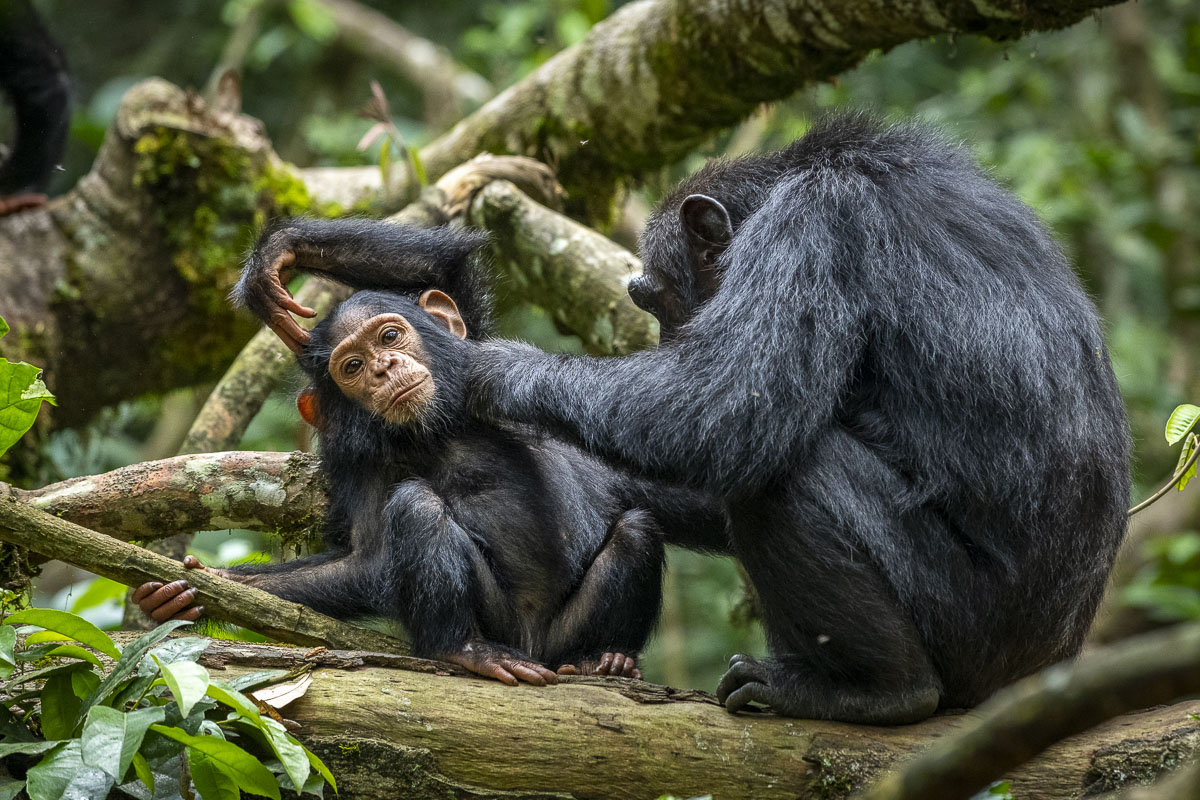
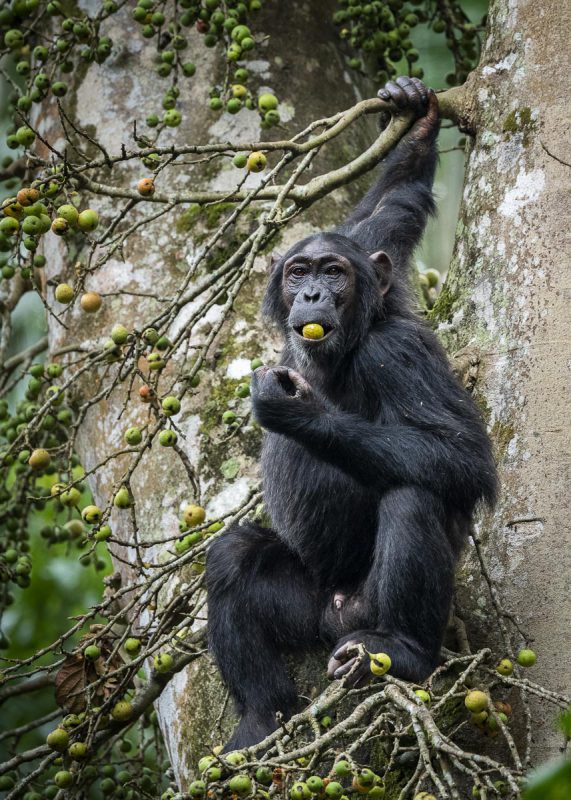
Bwindi Impenetrable National Park
Over half of the world’s endangered mountain gorillas live in Uganda. The majority of the gorilla population in Uganda are in the Bwindi Impenetrable National Park (BINP) with some small groups in the Mgahinga Gorilla National Park (MGNP). BINP is one of the most biologically diverse areas on Earth, with a thick ground cover of ferns, vines, and other plants, and giant hardwoods intertwined with bamboo. The latest census has revealed that over 1,000 gorillas inhabit the mountainous areas of Uganda, Rwanda and the Democratic Republic of Congo, which represents an unprecedented rebound of the population since the 90’s.
Gorilla habits are very different than chimpanzees. They live in a very close families headed by a mature male called a ‘silverback’. They are exclusively vegetarian with their diet consisting of over 70 different plant species. Gorillas are considered gentle giants and are very intelligent, using vocal sounds to communicate and tools like other great apes. There are four trekking centres in BINP in towns of Buhoma, Ruhija, Rushaga and Nkuringo. We will use various combinations of these centres to ensure that we have the opportunity to visit three different families during our safaris. Each gorilla family can host only one group of visitors per day with a max of eight people. Treks can vary from a few minutes to many hours before a given gorilla group is located. Once we find the group, we will be given an hour for observation, pro- and amateur photography, and delighting in being face-to-face with these incredible apes. As with our chimps experience, local guides and rangers call all the shots regarding behaviour and positioning when around the gorillas. In Bwindi Impenetrable Forest there is also a chance to see L’Hoest monkey, a small and elusive primate inhabiting tropical forests. Golden monkeys are an endemic species found on the border with Rwanda and Congo in the Mgahinga Gorilla National Park (part of the famous Virunga Mountains), which we will be visiting before departing back to Entebbe. A minimum level of fitness is required, as some ascends and descends may be over 200-300m vertical differential. Every trek is different and will create lasting memories.
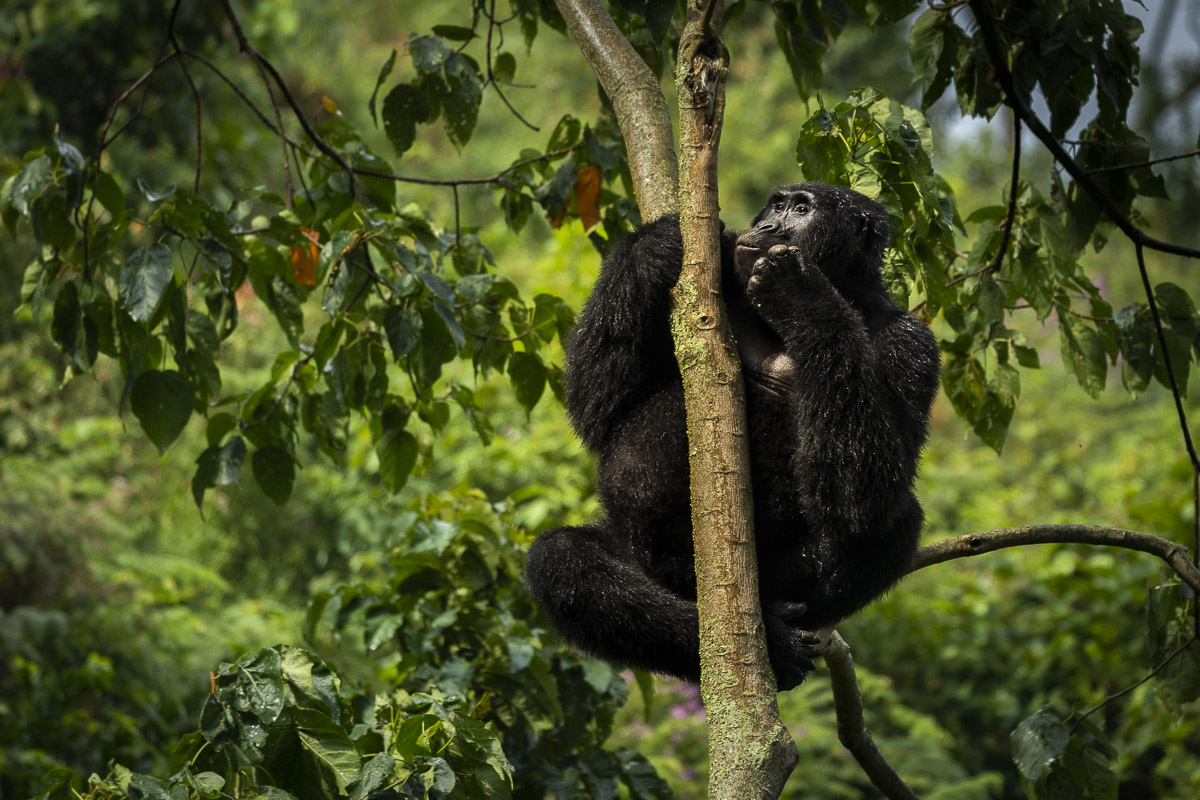
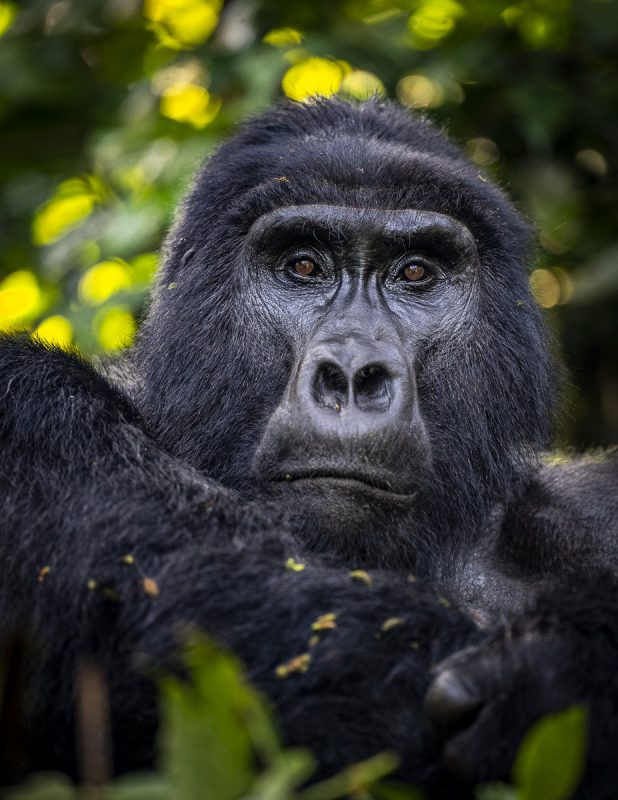
Queen Elizabeth National Park is located between Kibale and Bwindi, with Lake George and Lake Edward within its boundaries. The park has a variety of habitats, including volcanic craters, grassy plains and tropical forest. One of its main attractions is the Kazinga channel, a natural waterway connecting Lake George and Lake Edward. The channel has a magnificent view of the most important wildlife ventures within Queen Elizabeth National Park. A boat trip along the shores of the channel is the best way to see diverse wildlife living within its natural environment, such as buffaloes, elephants, crocodiles and birds in addition to other wild animals that live within the habitats on both sides of the channel. Further south lies the Ishasha, which is known for its resident tree climbing lions. The lions can be spotted hanging on branches of huge fig trees hungrily gazing at passing herds of Uganda kob antelopes, a major food source for these lions.
